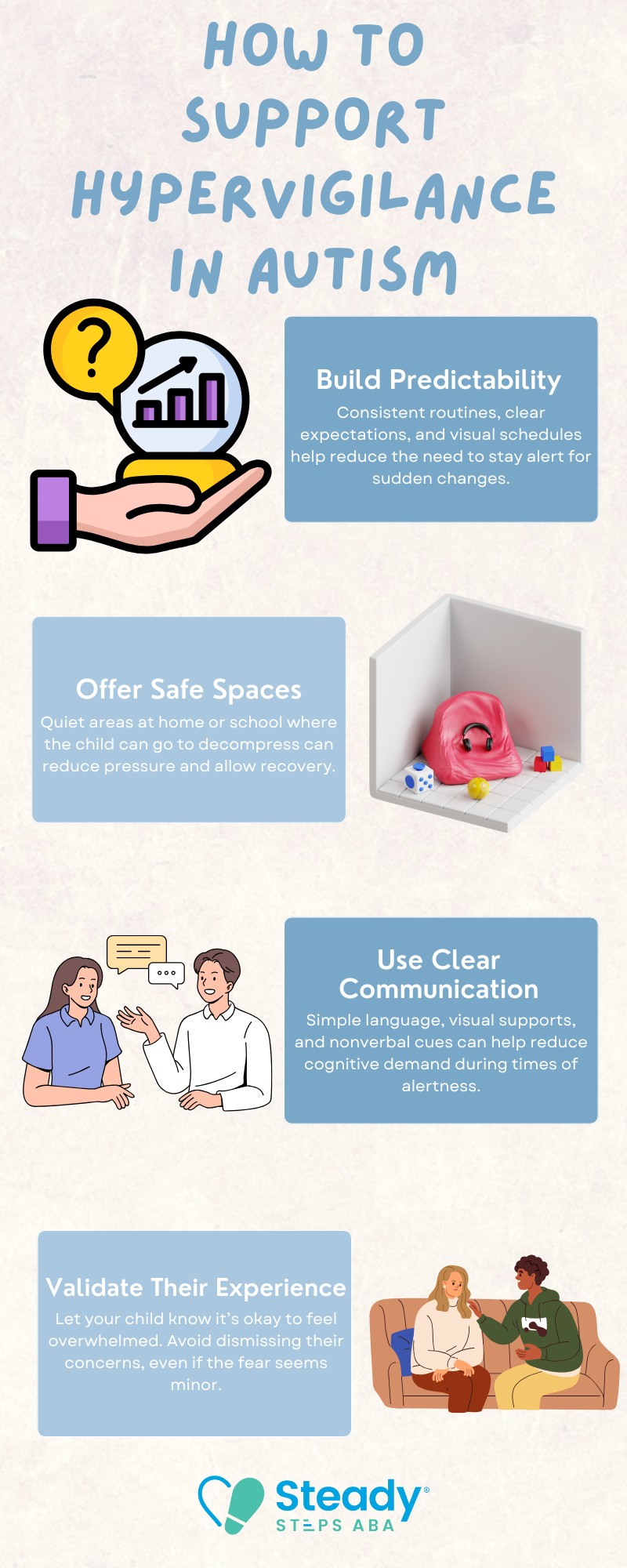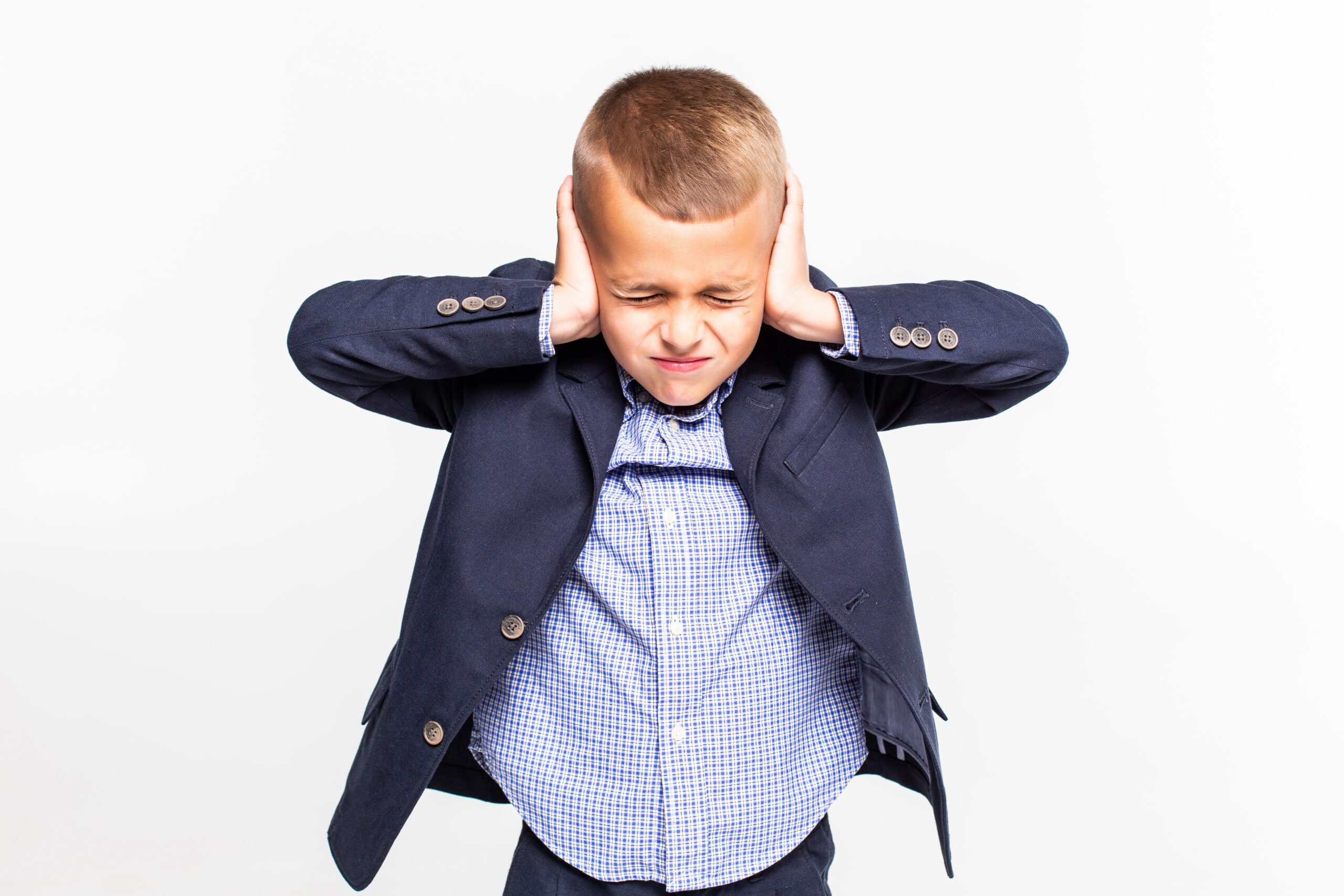Key Points:
- Hypervigilance in autism is a heightened state of sensory and emotional alertness triggered by internal and external stimuli.
- It can present as anxiety, scanning the environment, sleep issues, or social withdrawal.
- Understanding its causes helps caregivers create safer, more supportive environments for autistic individuals.
Hypervigilance in autism often goes unnoticed or misinterpreted. For many autistic individuals, especially children, it may appear as restlessness, withdrawal, or excessive worry. But what’s really happening is a constant state of alertness that feels necessary for survival.
This article explains what hypervigilance in autism looks like, what causes it, and how caregivers can help. With clear signs and proven strategies, families can reduce overwhelm and build a better daily rhythm for their child.
What Is Hypervigilance in Autism?
Hypervigilance in autism refers to an ongoing state of heightened sensory and emotional awareness, often driven by a need for safety and predictability. It’s not the same as general anxiety—it’s a survival-based, body-wide alertness to potential threats, even when no danger is present.
Autistic individuals often feel a need to monitor their surroundings due to unpredictable environments, social confusion, or past overstimulation. Hypervigilance can be mentally and physically draining, and may lead to burnout, avoidance behaviors, or shutdowns.

What Triggers Hypervigilance in Autistic Individuals?
Understanding the root causes of hypervigilance is key to managing it. Triggers vary by individual, but many are rooted in difficulty with processing sensory or emotional information. Often, the response is not a choice—it’s an instinctive reaction to discomfort or fear.
Common causes include:
1. Sensory Sensitivities
Loud sounds, bright lights, or even mild textures can be overwhelming. When the body is constantly bracing for input, it goes into a defensive state.
2. Social Confusion or Misunderstandings
Unclear expectations or ambiguous social rules can lead to chronic worry. An autistic person may remain on high alert to avoid making mistakes or being misunderstood.
3. Trauma or Repeated Overwhelm
Previous meltdowns, punishments, or overstimulation can cause the brain to stay in protection mode, especially in similar situations.
4. Lack of Predictability
Unstructured or inconsistent routines can intensify feelings of uncertainty, leading to increased scanning and preparation for perceived threats.
How Does Hypervigilance Appear in Daily Life?
Hypervigilance in autism often shows up as constant scanning for potential stressors, misunderstandings, or sensory threats in the environment. This can look like over-preparing for social interactions, avoiding uncertainty, or feeling on edge in seemingly low-stress situations.
It’s not about paranoia or fear, but a learned response to unpredictable environments or past negative experiences. Over time, hypervigilance can lead to exhaustion, difficulty relaxing, or physical symptoms like headaches and muscle tension.
For autistic individuals, it may stem from masking, sensory overload, or anxiety about social norms, and often goes unnoticed because it’s internally managed rather than outwardly expressed.
Is Hypervigilance in Autism the Same as Anxiety?
While hypervigilance and anxiety can co-occur, they are not the same thing. Anxiety is an emotional response, while hypervigilance is a physiological state. In autistic individuals, hypervigilance may occur even when no traditional anxiety is present.
However, long-term hypervigilance can contribute to chronic anxiety, especially when the individual doesn’t have the tools or language to communicate their stress. Understanding this distinction allows for early intervention and compassion.
How Can Families Support a Child Experiencing Hypervigilance?
Support starts with recognition. Once caregivers understand that a child isn’t being defiant or “overreacting,” they can begin to reduce overwhelm and build in more safety. Below are some ways to support:

Can Hypervigilance Be Reduced Over Time?
Yes, hypervigilance can be reduced over time with consistent support, safe environments, and self-regulation strategies. While it may not disappear completely, the intensity and frequency of hypervigilant states can lessen through personalized coping tools.
Therapeutic support like ABA or CBT, sensory accommodations, and routines that promote predictability often help autistic individuals feel more secure. Over time, these strategies teach the brain it’s safe to let its guard down. Building trust in others and in one’s environment plays a key role in reducing chronic alertness and the exhaustion that often comes with it.
How Does ABA Therapy Help Autistic Children Overcome Hypervigilance?
ABA therapy helps autistic children overcome hypervigilance by building trust, teaching coping skills, and reducing environmental triggers. It focuses on creating predictable routines and reinforcing calming behaviors in safe, structured ways.
By identifying specific triggers that cause heightened alertness, ABA therapists can develop individualized strategies to reduce anxiety responses. Through gradual desensitization, social skill development, and positive reinforcement, children learn to feel more in control and less threatened by their surroundings.
Over time, this promotes emotional regulation, safer engagement in new situations, and improved confidence in daily life.
Build Confidence and Independence With ABA Therapy
Hypervigilance in autism is not “bad behavior” or anxiety to push through. It’s a signal that an autistic individual feels unsafe, overstimulated, or overwhelmed. The right support begins with understanding and leads to lasting tools that protect both emotional well-being and daily functioning.
Steady Steps ABA offers ABA therapy in Maryland with a focus on individual strengths, emotional safety, and building lifelong coping strategies. We work closely with families to reduce stressors, increase predictability, and foster confidence in autistic children.
Reach out to us to learn how our ABA therapy in Maryland can support your child in navigating their world with less stress and more stability.






